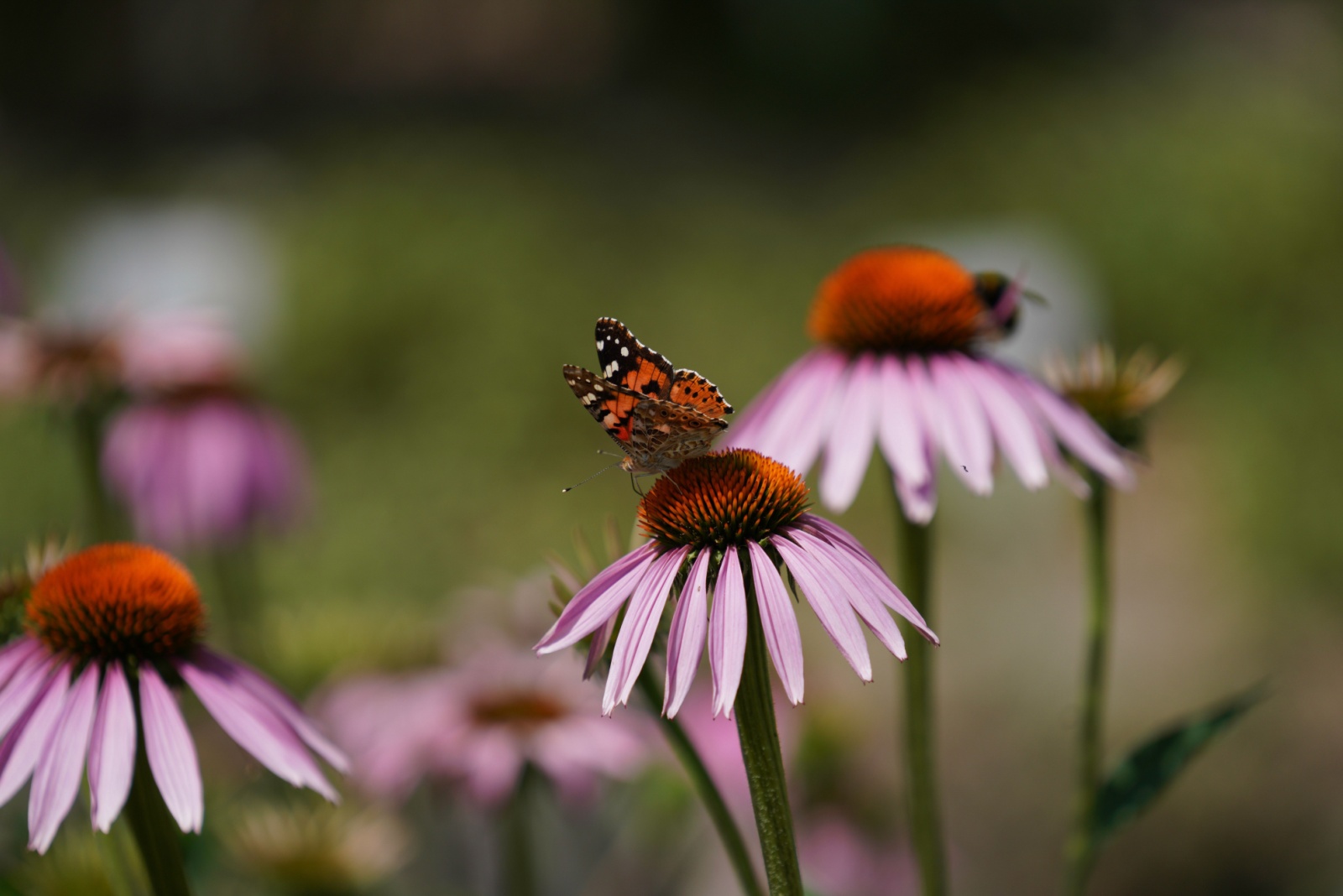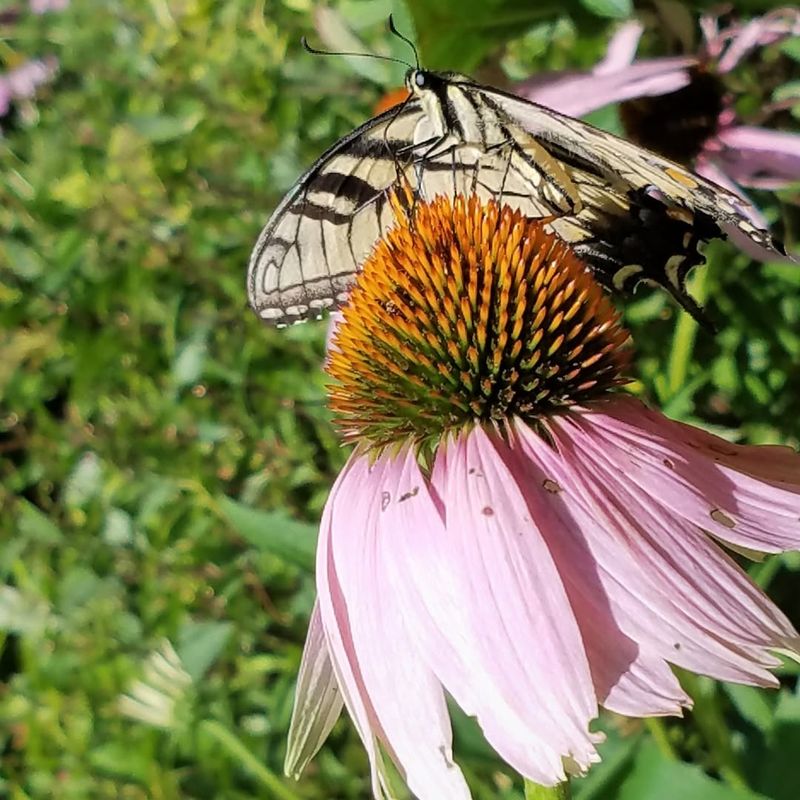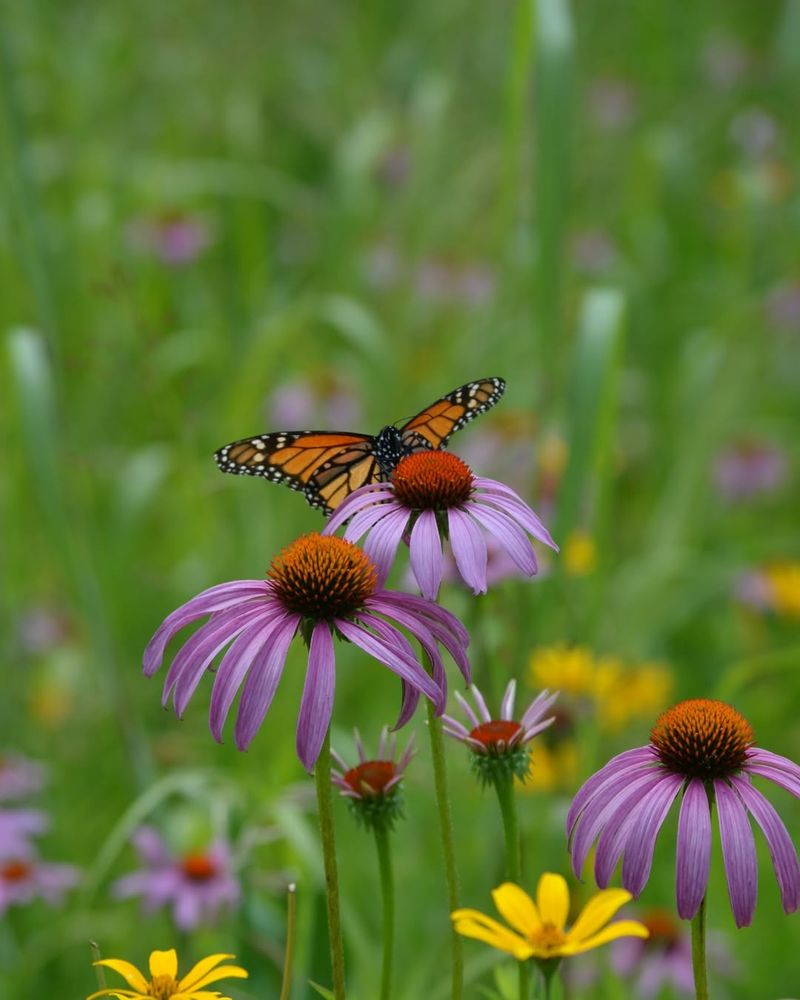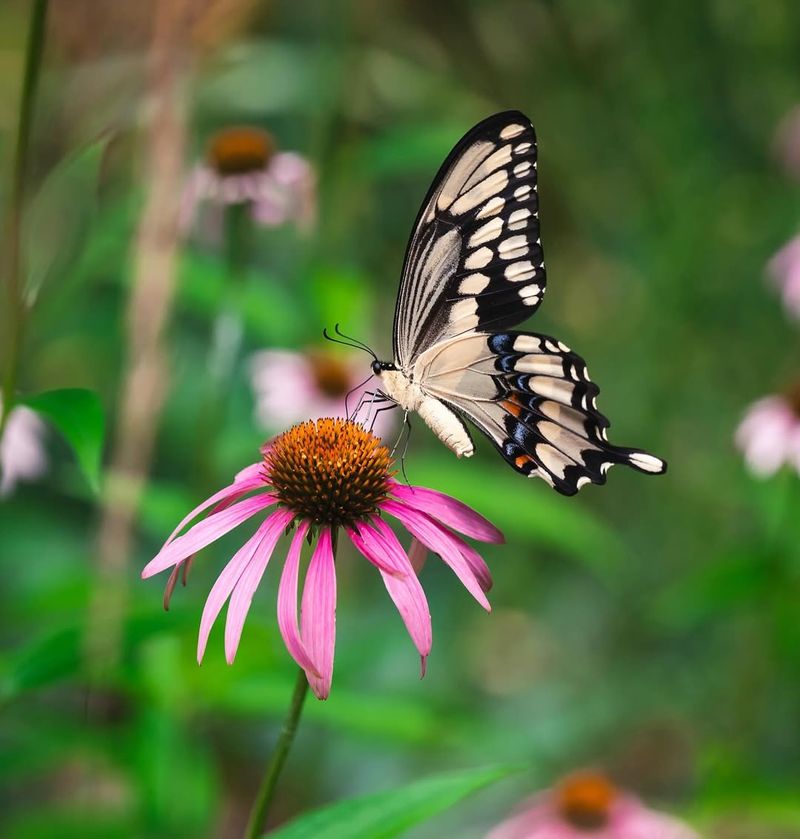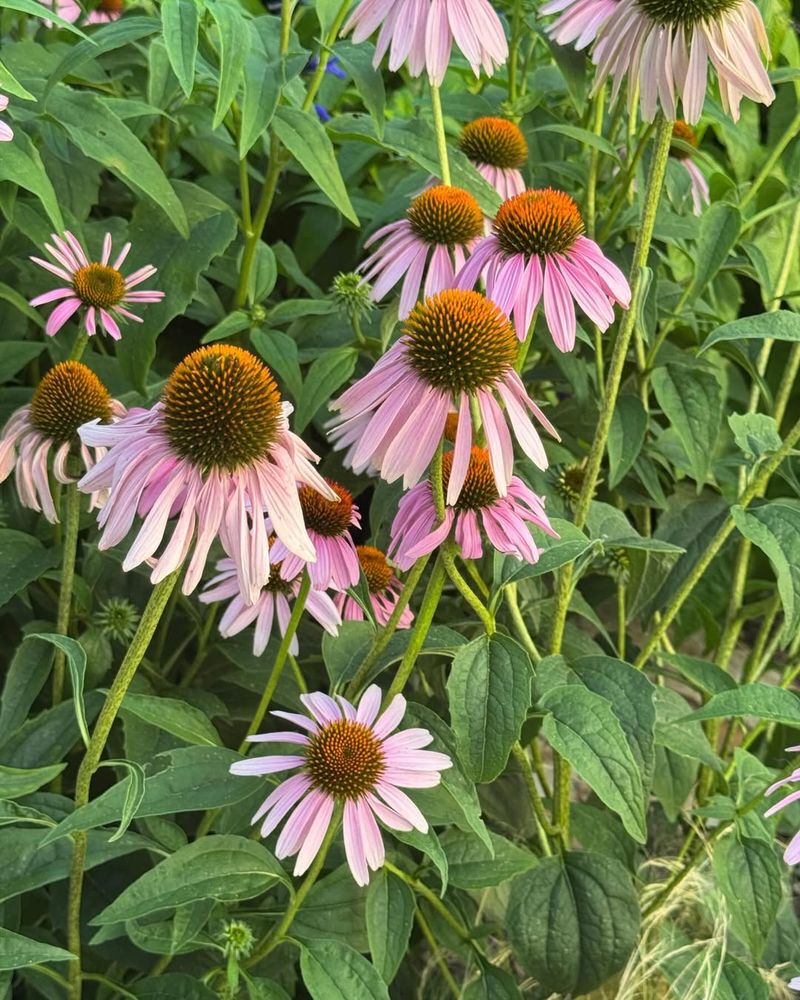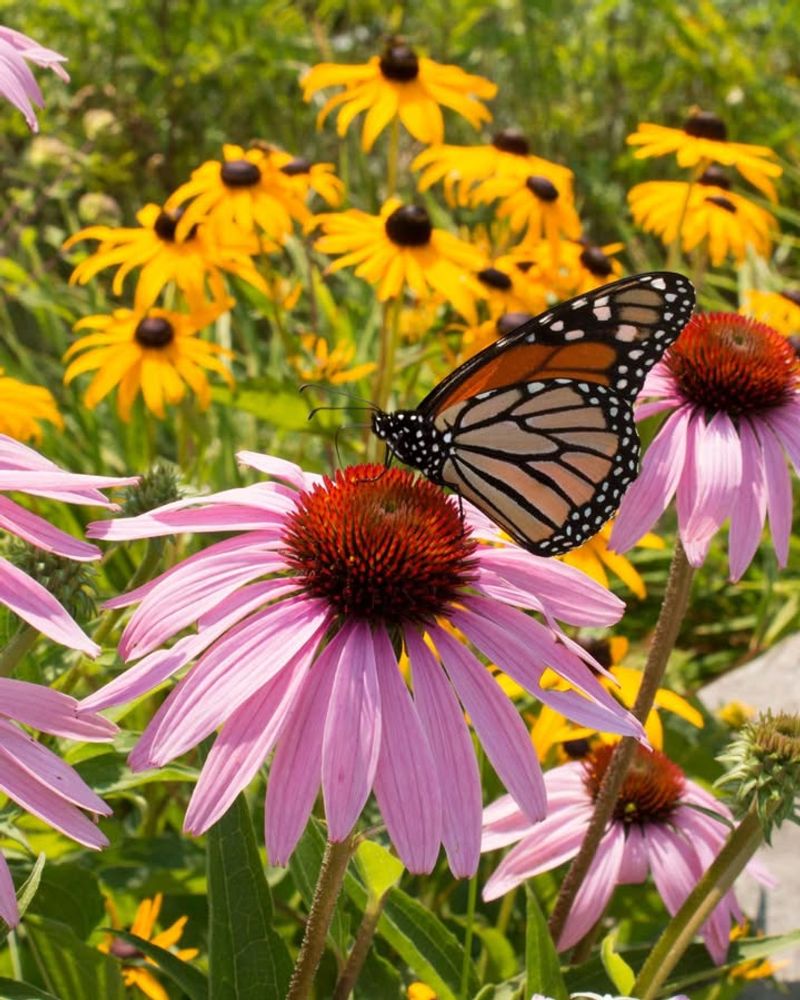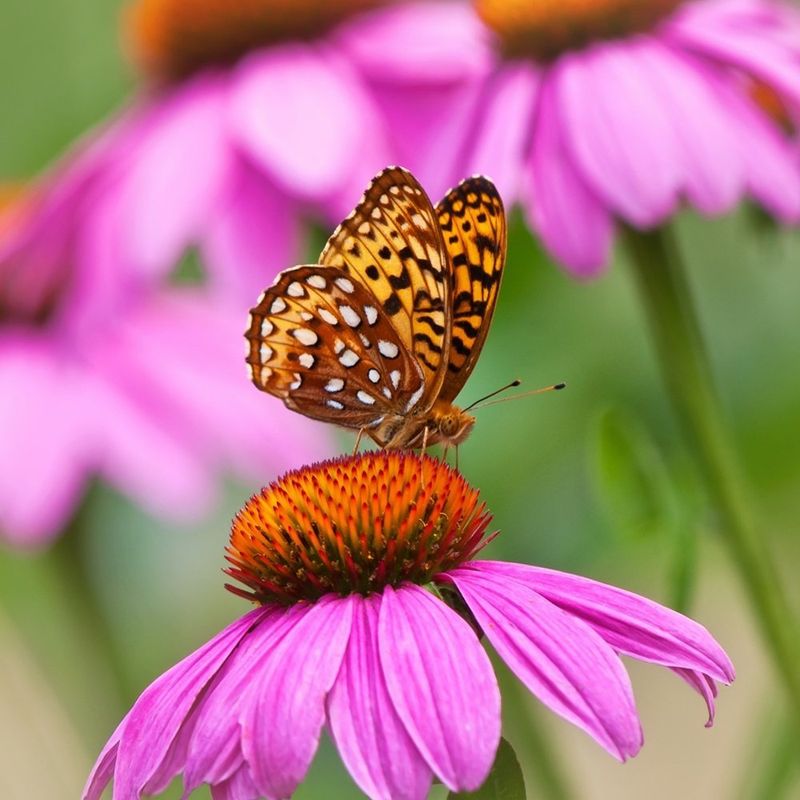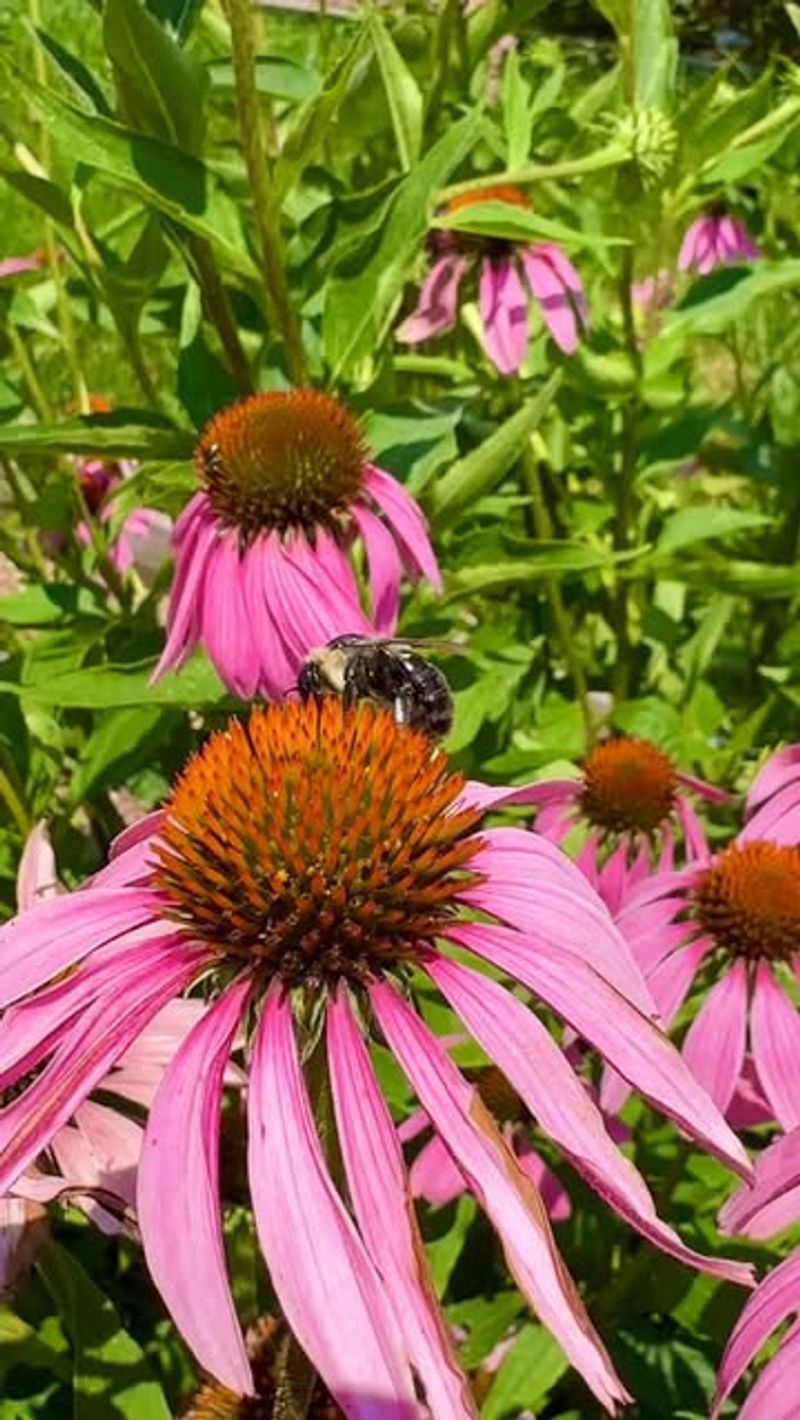If you want more butterflies fluttering through your Michigan yard, purple coneflower is a top pick. This native wildflower blooms all summer and serves up nectar they can’t resist. It’s not just beautiful—it’s a pollinator magnet.
Butterflies, bees, and other beneficial insects flock to its vibrant petals. I’ve found it’s also one of the easiest plants to grow here. Once it’s settled in, it needs very little care and keeps coming back year after year.
1. Native Plant That Thrives In Michigan Soil
Purple coneflower originally comes from the prairies and open woodlands of North America, making it perfectly adapted to Michigan’s growing conditions. The plant handles clay soil, sandy soil, and everything in between without complaint.
Once your coneflowers establish roots, they become incredibly drought-tolerant and survive Michigan’s unpredictable weather patterns. You won’t need to baby these tough perennials or worry about them during dry spells, which makes them ideal for busy gardeners who want beautiful results without constant attention.
2. Blooms Last From June Through September
Few flowers offer such an extended blooming period as purple coneflower does throughout Michigan summers. The first flowers appear in early June and continue opening until the first frost arrives in September or even early October.
This long flowering window means butterflies have a reliable nectar source for months. Deadheading spent blooms encourages even more flowers to form, though many gardeners leave some seed heads for birds to enjoy during fall and winter months when food becomes scarce.
3. Attracts Monarch Butterflies During Migration
Monarch butterflies pass through Michigan twice each year during their incredible migration journey. Purple coneflower provides essential fuel for these travelers as they move between Mexico and Canada. Planting coneflowers in your yard creates a rest stop where monarchs can refuel before continuing their journey.
You’ll often see multiple monarchs visiting the same plant, especially during late August and early September when southbound migration peaks across the state and these beautiful insects desperately need energy-rich nectar sources.
4. Swallowtails Love The Nectar-Rich Flowers
Eastern tiger swallowtails are among Michigan’s most spectacular butterflies, and they’re frequent visitors to purple coneflower gardens. These large yellow butterflies with black stripes can’t resist the abundant nectar that coneflowers produce.
Black swallowtails also visit regularly, creating a stunning contrast against the purple petals. Watching these impressive butterflies flutter from flower to flower is one of summer’s greatest pleasures, and planting just a few coneflowers practically guarantees you’ll see them visiting your yard throughout the growing season.
5. Requires Almost No Maintenance After First Year
Michigan gardeners appreciate plants that don’t demand constant attention, and purple coneflower fits that description perfectly. After the first growing season, these perennials need virtually no care beyond occasional watering during extreme droughts.
They resist most pests and diseases naturally, so you won’t be spraying chemicals that could harm the butterflies you’re trying to attract. The plants spread slowly over time, creating larger clumps that produce more flowers each year without becoming aggressive weeds that take over your entire garden bed.
6. Grows Well In Full Sun Or Partial Shade
Not every gardener has a spot with perfect sunlight, but purple coneflower adapts to various light conditions across Michigan yards. The plants perform best in full sun, producing the most flowers and attracting the most butterflies.
However, they’ll still bloom reasonably well in partial shade, making them versatile for different garden locations. This flexibility means you can tuck coneflowers into spots that might not work for sun-demanding plants, allowing you to create butterfly habitats in multiple areas of your property.
7. Painted Ladies And Fritillaries Visit Regularly
Beyond the famous monarchs and swallowtails, purple coneflower attracts numerous other butterfly species throughout Michigan. Painted ladies, with their orange and black patterns, are common visitors that arrive in waves some years.
Great spangled fritillaries, those orange butterflies with silver spots underneath, also frequent coneflower patches during July and August. Creating a diverse butterfly garden becomes much easier when you start with plants like purple coneflower that appeal to so many different species searching for nectar sources.
8. Provides Winter Interest And Bird Food
The benefits of purple coneflower extend well beyond butterfly season in Michigan gardens. After flowers fade, the distinctive seed heads remain standing through winter, adding interesting texture to snow-covered landscapes.
Goldfinches, chickadees, and other songbirds feast on the seeds throughout fall and winter months, creating year-round wildlife value.
Many gardeners deliberately leave the dried stems standing until spring rather than cutting them down, appreciating both the architectural interest and the food source they provide when other natural food becomes buried under Michigan snow.

